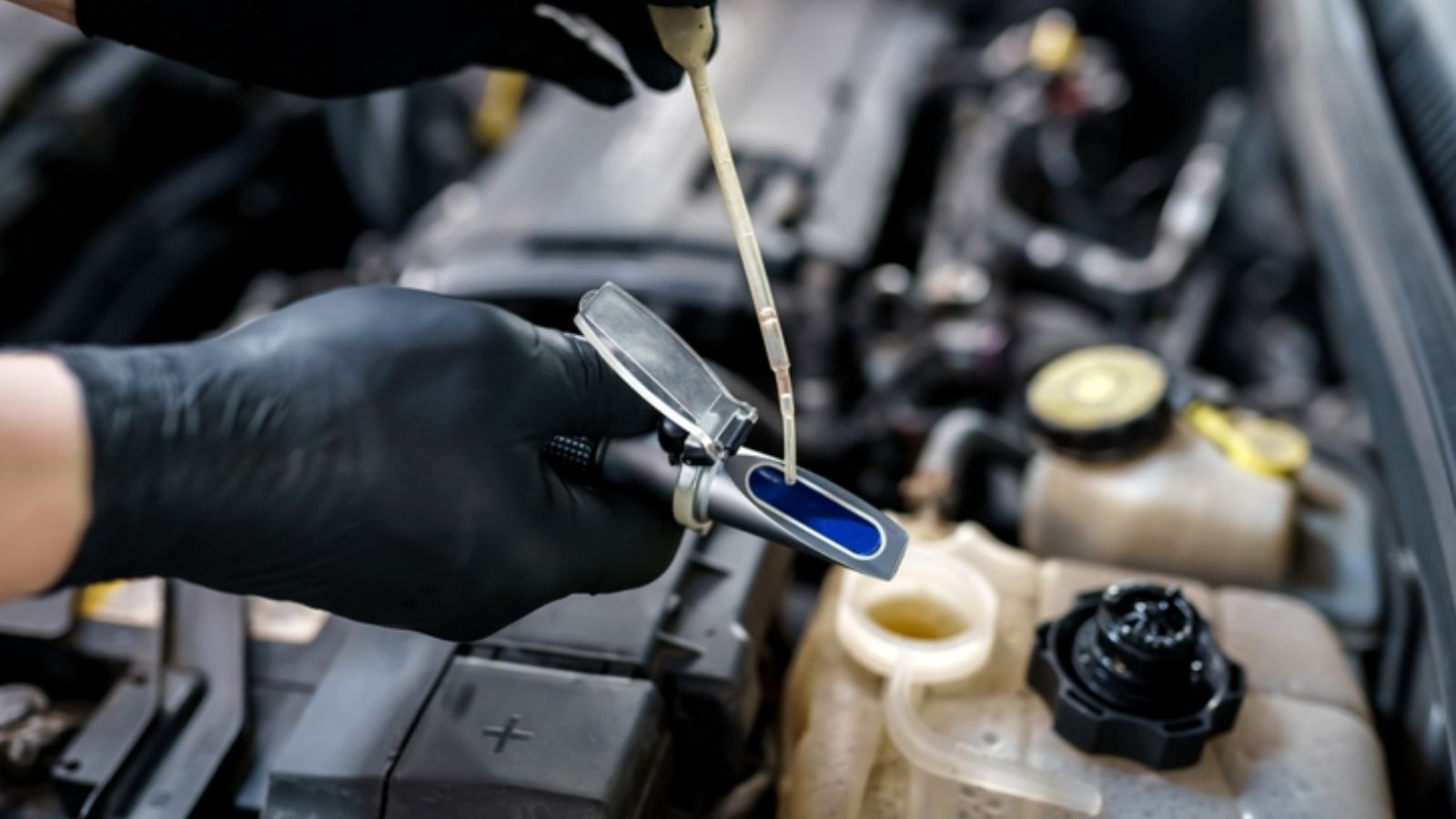As winter approaches, the chill in the air can take a toll on your vehicle. Maintaining your car during the winter months not only ensures your safety but also extends its lifespan, keeping it roadworthy when you need it most. From checking your tyres to evaluating your battery, there are essential steps you can take to prepare for harsher weather conditions.

Preparing Your Car for Chilly Conditions
Getting your car ready for the cold is essential for maintaining performance and safety. Focus on antifreeze levels, battery health, and tyre condition to navigate winter effectively.
Checking Antifreeze Levels
Antifreeze is crucial during the winter months. It prevents your engine from freezing and protects components from corrosion.
Check your coolant reservoir and ensure the levels meet the manufacturer’s recommendation, usually found in your user manual. If it’s low, top it up with a 50/50 mix of water and antifreeze.
Inspect the condition of the antifreeze as well. Over time, it can lose its effectiveness. If the colour is dark or murky, consider flushing the system and replacing the fluid.
Investing a little time here can prevent serious engine damage when temperatures drop.
Battery Performance Evaluation
Cold weather can sap battery power quickly. Check your battery connections for corrosion and ensure they are tight. Loose or dirty connections can hinder performance during chilly weather.
Test the battery voltage with a multimeter; ideally, it should read above 12.4 volts when not running. If it dips below this, consider recharging or replacing the battery.
Also, keep an eye on the age of your battery. If it’s older than three years, it may be wise to have it tested by a professional.
Preparing your battery now can save you from unexpected starts during the frost.
Tyre Inspection and Winter Tyres
Tyres are your only contact with the road, making them vital for safe driving in winter. Check your tread depth; it should be at least 3mm for adequate grip on wet or icy roads.
Inspect for uneven wear, which could indicate alignment or inflation issues. Always maintain the recommended tyre pressure, as it can drop in cold weather.
Consider winter tyres, which provide better traction in snow and ice. These tyres remain flexible in lower temperatures and have deeper treads for improved grip.
Switching to winter tyres can enhance your car’s handling and safety during challenging conditions.
Winter Car Care Essentials
Caring for your car during the winter months is crucial for its longevity and performance. Focusing on cleaning, visibility, and efficient systems can help keep your vehicle in top condition.
Regular Cleaning and Protection Against Rust
Regular cleaning is essential in winter to remove salt and grime that can cause rust. Start by washing your car every few weeks, paying special attention to the underside and wheel wells. Use a pressure washer if possible to ensure all debris is cleared away.
Applying a protective wax can create a barrier against the elements. Choose a high-quality wax specifically designed for winter use, as it can help repel moisture and prevent corrosion.
Don’t forget to clean your tyres and keep them maintained. Inspect them for wear and ensure they are properly inflated, as a well-maintained set can improve traction on icy roads.
Maintaining Visibility
Clear visibility is crucial for safe winter driving. Regularly check and replace your windshield wipers if they show signs of wear. Opt for winter wiper blades, as they are designed to handle snow and ice better.
Keep your windscreen washer fluid topped up with a winter formula that won’t freeze. This helps maintain visibility in adverse weather conditions. Remember to also clean your headlights regularly; foggy or dirty lights diminish your ability to see and be seen.
Consider using an ice scraper for when temperatures drop. Keeping one in your car ensures you’re prepared for sudden weather changes.
Ensuring Efficient Heating and Cooling Systems
Maintaining your car’s heating system is vital during winter. Ensure the heater is functioning properly before the cold sets in. If you notice unusual noises or reduced airflow, consult a mechanic for a check-up.
Check the antifreeze levels in your car. Antifreeze protects your engine by preventing it from freezing and helps maintain proper operating temperatures. If you haven’t changed the coolant in a while, now is a good time to do so.
It’s also wise to inspect your battery as cold weather can reduce battery performance. Ensure it’s clean and securely attached, and consider having it tested if it’s more than three years old.
Driving Safely in Wintry Weather
Winter weather can create challenging driving conditions. Knowing how to adjust your driving and what equipment to keep handy can enhance your safety on the road.
Adjusting Your Driving to Icy Conditions
When driving in icy conditions, slowing down is essential. Reducing your speed gives you more time to react to unexpected situations.
Increase your following distance; it’s crucial in case you need to brake suddenly. Aim for at least three to four seconds behind the vehicle in front of you.
Be gentle with your steering, accelerator, and brakes. Rapid movements can lead to loss of control. If your vehicle starts to skid, steer in the direction you want to go and avoid slamming on the brakes.
Using low gears can help maintain traction on hills.
Carrying Essential Winter Equipment
Having the right winter equipment in your car can make a significant difference.
Keep the following items in your vehicle:
- Ice scraper: Essential for clearing your windscreen.
- Snow shovel: Useful for digging out if you get stuck.
- Blanket: Provides warmth if you’re stranded.
- First aid kit: Always handy in case of minor injuries.
- Sand or kitty litter: Can help improve traction if your tyres are stuck.
Ensure your mobile phone is charged and keep a power bank as backup.
Having these items ready can help you face winter’s challenges with confidence.
